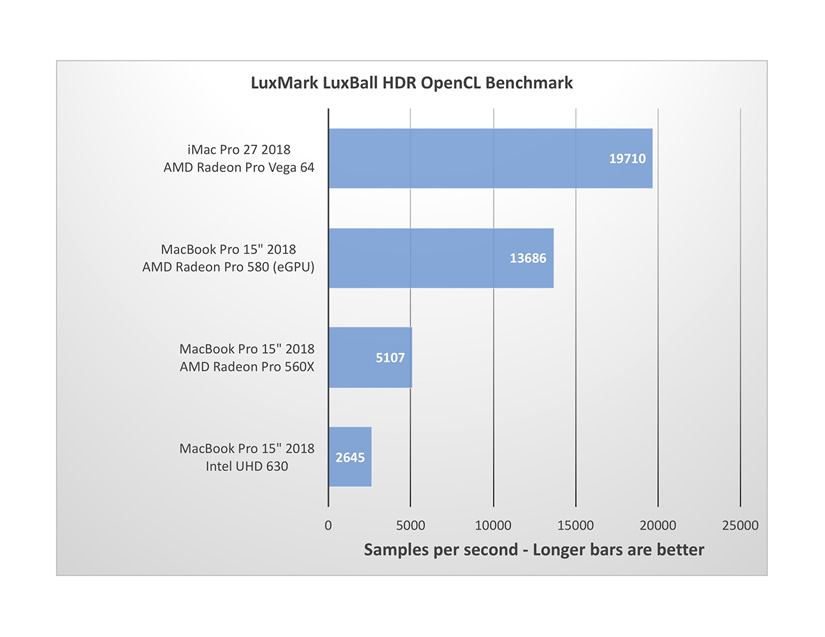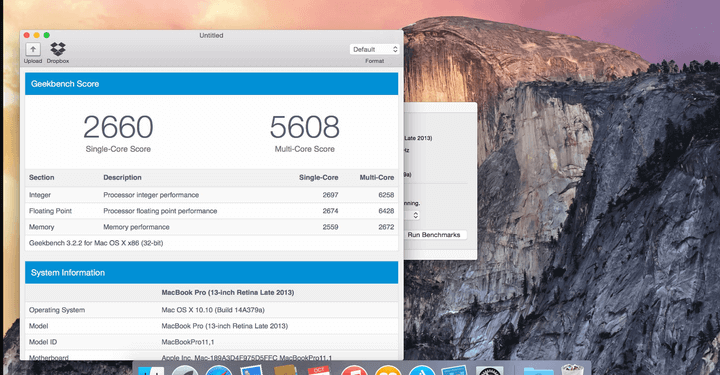

And we learned a lot from them.įirst, let’s check out the specifications for the laptops:
#MACBOOK PRO GPU BENCHMARK MAC#
Many of the benchmark programs PCWorld used aren’t even available on the Mac or do not have native M1 versions, but PCWorld did run Geekbench and Cinebench, two benchmarks Macworld also uses. To be clear, PCWorld didn’t include Apple silicon in its review-they are reviewing Windows-based laptops and comparing Alder Lake to its predecessor and a new 8-core Ryzen 9 5900HX CPU.
#MACBOOK PRO GPU BENCHMARK PC#
The overall results indicate that most Apple fans would clearly be better served by the less expensive MacBook Pro 16 with M1 Pro SoC thanks to its seemingly superior price-performance ratio.Intel’s Alder Lake processor is starting to become available in PC laptops and that means one thing: benchmarks! Macworld’s sister publication, PCWorld, posted a review of one of the first laptops with the Core i9-12900HK processor (code-named Alder Lake), and it inevitably got us thinking about Apple’s M1 Pro and Max. The new MacBook Pro 16 machines fall behind the 18-core iMac Pro in Cinebench R23 multi thanks to the eight extra cores the Intel Xeon W-2191B processor brings with it, but when it comes to Cinebench R23 single the M1 Pro and M1 Max chips are way ahead of the much-older iMac Pro and at the same level as the M1 MacBook Pro, demonstrating the benefits of the newer M1 Firestorm and Icestorm microarchitecture. Obviously the M1 Pro and M1 Max generally match in the CPU benchmarks, which include runs through Cinebench R23 and Geekbench 5. The host then proceeds to cover the 10-core CPU part that is found in both variants of the 2021 Apple Silicon. Additionally, in the Blender BMW GPU bench there is practically nothing between the two MacBooks, so as Miani points out, while the M1 Max MacBook Pro 16 would appeal to those who are involved in constant graphics-intensive tasks or for those who want to play games, the much-cheaper M1 Pro machine would likely be sufficient to cover the majority of use cases. However, in video-editing benchmarks such as Final Cut Pro and DaVinci Resolve, only a few seconds separates the M1 Pro device with the M1 Max laptop in file exporting and rendering.

With twice the GPU cores, it’s expected that the M1 Max would overpower the M1 Pro in these particular benchmarks. It’s far ahead of the M1 Pro and also beats out other comparison devices, such as the 18-core iMac Pro and the 2020 iMac i7. In the real-world Shadow of the Tomb Raider game test, the M1 Max MacBook Pro 16 pulls off nearly 100 FPS while operating via Rosetta. The heavier M1 Max machine, which has a slightly higher weight because of its larger SoC heatsink, unsurprisingly proves to be a monster in graphics and GPU benchmarks, such as Geekbench compute and the various GFXBench tests. The results of the numerous benchmarks can be seen in the screenshots posted below, with Miani’s entertaining video also embedded beneath this article. Miani details how much the laptops cost, with the M1 Pro MacBook Pro 16 (16-core GPU, 16 GB RAM) costing US$2,699 and the M1 Max MacBook Pro 16 (32-core GPU, 64 GB RAM) requiring a payment of US$3,899. The M1 Max model was also tested in the same benchmarks in high-power mode, with the arguably disappointing results initially not shining a good light on this particular feature. The host put the MacBooks through 20 benchmarks to give viewers a thorough idea of just how powerful the new Apple laptops are. The popular TechTuber Luke Miani has posted a new video comparing an M1 Pro-based Apple MacBook Pro 16 with a model featuring the more-powerful M1 Max SoC and additional RAM.

German-English-Translator - Details here (English native speakers preferred) News Writer (AUS/NZL based) - Details here
#MACBOOK PRO GPU BENCHMARK HOW TO#
Are you a techie who knows how to write? Then join our Team! English native speakers welcome!


 0 kommentar(er)
0 kommentar(er)
